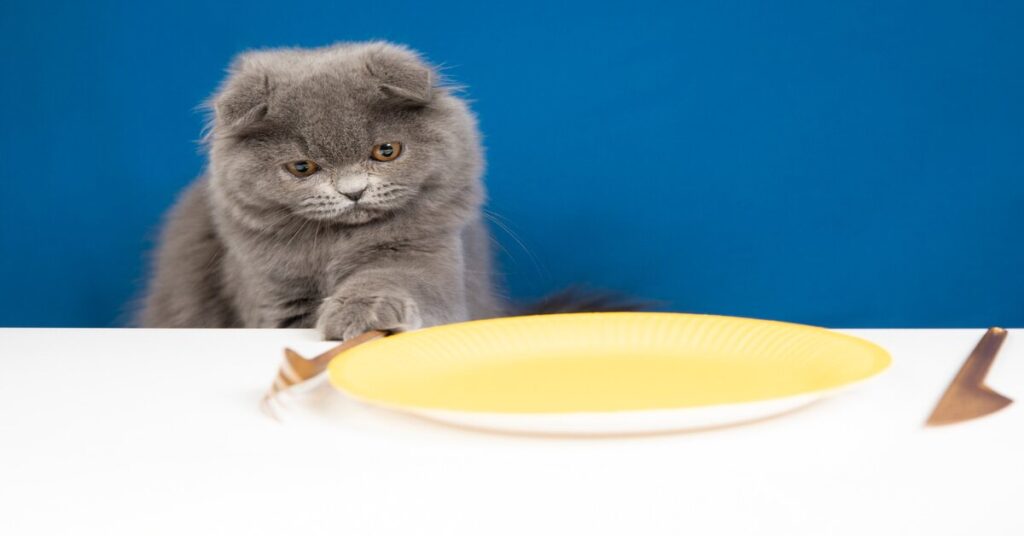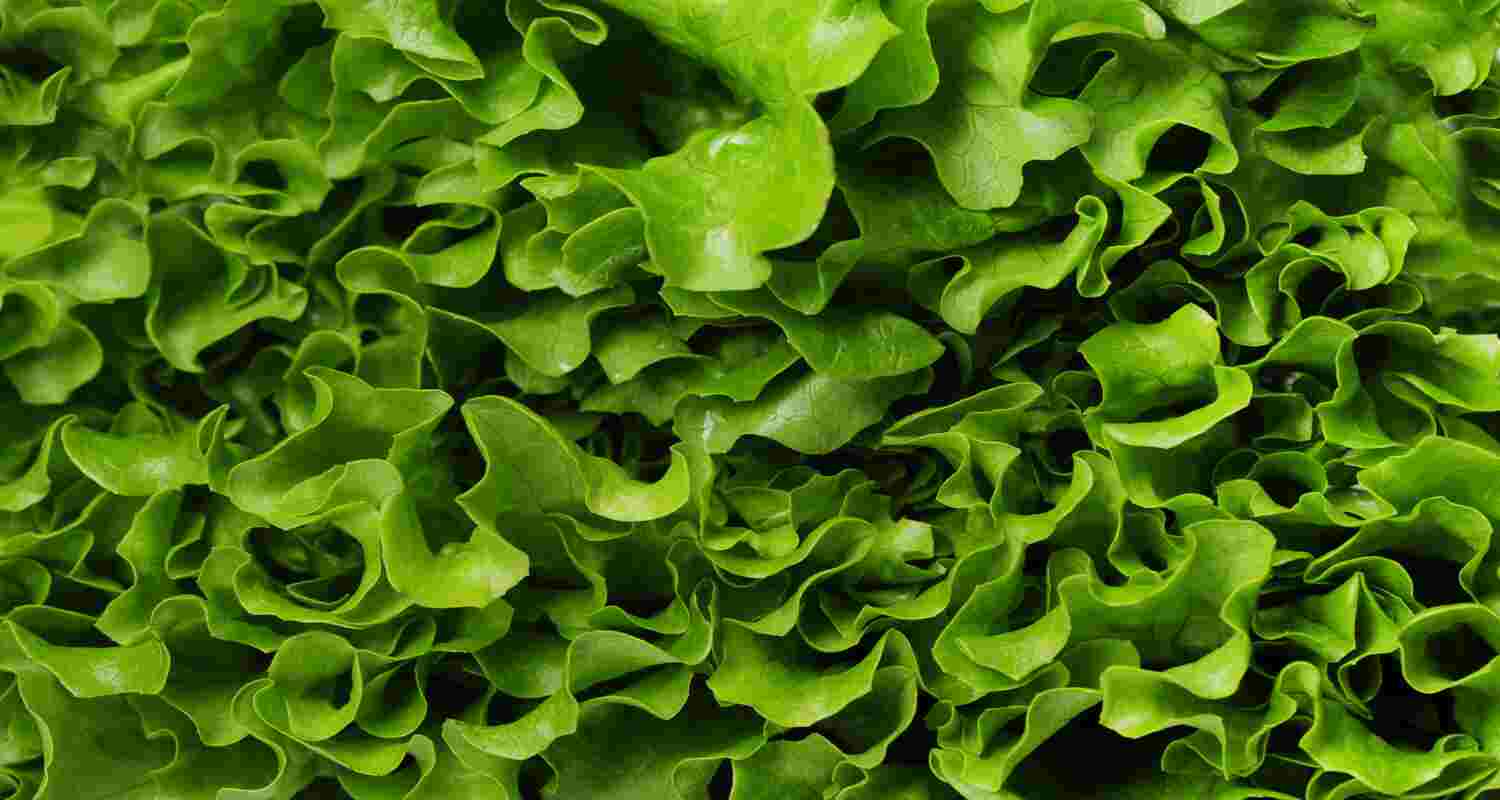Can cats eat lettuce? While cats are obligate carnivores and don’t require vegetables, small amounts of plain, washed lettuce are generally safe as an occasional treat. However, always observe your cat’s response and avoid any dressings or seasonings. If in doubt, consult your veterinarian before introducing new foods to your cat’s diet.
Can cats eat lettuce?
Can cats eat lettuce? Cats can eat lettuce in moderation. Lettuce is low in calories and can provide some hydration due to its water content. While it doesn’t offer significant nutritional value for cats, it can be a safe occasional treat or a way to add some variety to their diet.
However, some cats may not be interested in lettuce, and others may not tolerate it well. Before offering lettuce or any new food to your cat, it’s essential to observe their reactions. Some cats may enjoy small amounts of plain, washed lettuce, while others may show little interest.
Always remove any dressing or seasonings from the lettuce, as these additions can be harmful to cats.
Can cats eat lettuce? Potential benefits
The potential benefits of feeding lettuce to cats in moderation include:
- Hydration: Lettuce has a high water content, contributing to a cat’s overall hydration.
- Low-Calorie Snack: Lettuce is low in calories, making it a suitable option for cats who enjoy nibbling on greens without adding excessive calories to their diet.
- Source of Fiber: While cats are obligate carnivores and don’t require plant-based fiber, small amounts of lettuce may contribute to digestive health in some cases.
- Enrichment: Offering a variety of safe and cat-friendly foods, like lettuce, can add enrichment to a cat’s diet, promoting mental stimulation.
It’s important to note that while lettuce can be an occasional treat, it should not replace the essential nutrition provided by a balanced cat food diet.
Can cats eat lettuce? Potential risks
lettuce can be offered to cats in moderation, there are potential risks to be aware of:
- Digestive Upset: Some cats may have difficulty digesting plant matter, which could lead to digestive upset, including vomiting or diarrhea.
- Pesticide Residues: If not thoroughly washed, lettuce may carry pesticide residues. Cats are sensitive to certain chemicals, so it’s essential to use organic lettuce or wash it thoroughly.
- Dressing and Seasonings: Lettuce is often served with dressings or seasonings that may be harmful to cats. Always offer plain, washed lettuce without any added ingredients.
- Allergies: Cats can have allergies to various foods, including lettuce. Monitor your cat for any signs of allergic reactions, such as itching, swelling, or difficulty breathing.
- Obligate Carnivores: Cats are obligate carnivores, meaning their diet primarily consists of meat. While small amounts of lettuce are generally safe, it doesn’t provide essential nutrients found in a meat-based diet.
- Choking Hazard: Large pieces of lettuce can pose a choking hazard. Chop it into small, manageable pieces if you choose to offer it to your cat.
Always introduce new foods slowly and observe your cat for any adverse reactions. If you have concerns or if your cat has specific dietary restrictions or health issues, consult with your veterinarian before including lettuce in their diet.
Can cats eat lettuce? Feeding Guidelines
When it comes to feeding lettuce or any non-meat foods to your cat, here are some guidelines to consider:
- Moderation is Key: Lettuce should be offered in moderation. It should not replace a balanced and nutritionally complete cat food diet.
- Plain and Washed: Offer plain, washed lettuce without any dressings, seasonings, or additives. Cats are sensitive to certain ingredients that are safe for humans but may be harmful to them.
- Monitor for Reactions: Introduce lettuce slowly and in small amounts. Monitor your cat for any signs of digestive upset, allergies, or adverse reactions.
- Organic or Thoroughly Washed: To reduce the risk of pesticide residues, consider using organic lettuce. If using conventionally grown lettuce, ensure it is thoroughly washed.
- Chop into Manageable Pieces: To avoid a choking hazard, chop lettuce into small, bite-sized pieces.
- Consider Your Cat’s Health: If your cat has specific health conditions, dietary restrictions, or allergies, consult with your veterinarian before introducing new foods.
- Supplement, Don’t Replace: Lettuce and similar foods can be considered as occasional treats or supplements, but they should not replace the essential nutrients provided by a balanced cat food diet.
Remember that every cat is unique, and individual reactions to non-meat foods can vary.

Can cats eat lettuce? diet
When introducing lettuce to your cat’s diet, follow these steps:
- Start Slowly: Introduce small amounts of lettuce gradually. Monitor your cat’s reaction to ensure they tolerate it well.
- Choose the Right Type: Opt for plain, washed lettuce. Avoid varieties with added seasonings, dressings, or pesticides. Organic lettuce may be a safer option.
- Chop into Bite-Sized Pieces: To prevent choking, chop the lettuce into small, manageable pieces. Cats may find smaller pieces more appealing.
- Monitor for Allergic Reactions: Watch for any signs of allergies, such as itching, swelling, or changes in behavior. If you notice adverse reactions, discontinue feeding lettuce.
- Mix with Regular Food: Consider mixing small amounts of lettuce with your cat’s regular food. This helps associate the new food with familiar smells and tastes.
- Observe Digestive Responses: Monitor your cat’s digestive system for any signs of upset, such as vomiting or diarrhea. If issues persist, consult your veterinarian.
- Use as an Occasional Treat: Lettuce should be viewed as an occasional treat, not a primary food source. Ensure your cat’s main diet is nutritionally complete and balanced cat food.
- Consult with Your Veterinarian: If your cat has specific health concerns, dietary restrictions, or allergies, consult with your veterinarian before making significant changes to their diet.
Remember that while lettuce can be a safe addition to some cats’ diets, not all cats may be interested in or tolerate it.
Can cats eat lettuce? FaQs
Why is my cat obsessed with lettuce?
There could be several reasons for this behavior:
- Curiosity: Cats are naturally curious creatures. The unusual texture and smell of lettuce might pique their interest, leading to exploration and play.
- Chewing and Crunching: Some cats enjoy chewing on things, and lettuce provides a crunchy texture that can be appealing to them. It may mimic the sensation of biting into prey.
- Texture and Moisture: The crisp texture of lettuce might be enjoyable for your cat to chew on. Additionally, lettuce has a high water content, contributing to its hydration.
- Novelty: Cats often show attraction to new and unfamiliar items. Introducing lettuce as a novel object might intrigue your cat.
- Playfulness: Cats might engage with lettuce as a form of play. Batting at leaves or tossing them around can be entertaining for them.
- Scent: Cats have a highly developed sense of smell. The scent of lettuce, though subtle to humans, could be intriguing or attractive to your cat.
- Attention-Seeking Behavior: If your cat sees that engaging with lettuce leads to your attention or a reaction, they may continue the behavior as a way to interact with you.
Can baby cats eat lettuce?
Baby cats, also known as kittens, can eat small amounts of lettuce in moderation. However, it’s essential to ensure that the lettuce is plain, washed, and cut into very small, manageable pieces. Kittens primarily need nutritionally complete kitten food to support their growth and development. While lettuce doesn’t provide significant nutritional value for kittens, introducing small amounts as an occasional treat is generally safe. Always monitor their response and consult with a veterinarian if you have concerns about your kitten’s diet.
Can cats eat raw vegetables?
Yes, some cats can eat certain raw vegetables in moderation. However, it’s important to be selective and introduce them gradually. Safe options for cats include:
- Carrots: Cats can nibble on small, raw carrot pieces.
- Cucumber: Sliced cucumber is safe for cats to eat in small amounts.
- Bell Peppers: Some cats may enjoy small pieces of raw bell peppers.
When offering raw vegetables, ensure they are cut into small, manageable pieces. Keep in mind that not all cats have an interest in raw vegetables, and individual preferences vary. Additionally, avoid vegetables that are toxic to cats, such as onions and garlic. Always monitor your cat’s reaction and consult with a veterinarian if you have any concerns about their diet or if you plan to introduce new foods.
Can cats eat other vegetables?
Yes, some vegetables are safe for cats to eat in moderation. Here are a few examples:
- Carrots: Cats can enjoy small, cooked carrot pieces as a treat. Carrots are a source of beta-carotene.
- Green Beans: Plain, cooked green beans can be given to cats as a low-calorie snack.
- Pumpkin: Plain, canned pumpkin (not pumpkin pie filling) can be beneficial for digestion in small amounts.
Can cats eat wild lettuce?
No, it’s not advisable for cats to eat wild lettuce. Wild lettuce, like many plants found in nature, can potentially be toxic to cats. It’s crucial to identify specific types of wild lettuce before allowing your cat access to it. To ensure your cat’s safety, it’s best to stick to known safe options for cat treats and consult with a veterinarian if you have any concerns about your cat’s diet or exposure to potentially harmful plants
Why do cats chew on lettuce?
Curiosity, Texture, Playfulness: Chewing on lettuce may satisfy their curiosity, enjoy the texture, or be a playful behavior.




